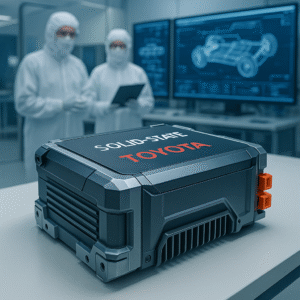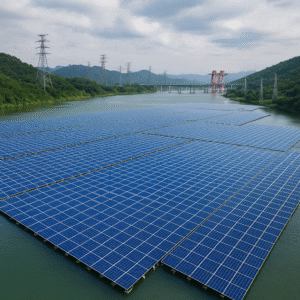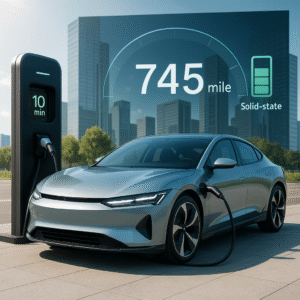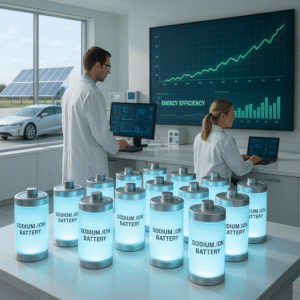As the global demand for energy rises and the climate crisis deepens, the need for sustainable energy solutions has never been more urgent. Fossil fuels, once the backbone of industrial progress, now stand as one of the primary contributors to greenhouse gas emissions. In response, a new wave of innovation is sweeping the energy sector — one that’s clean, renewable, and transformative.
Clean energy technology isn’t just about reducing carbon footprints — it’s about reimagining how we power the world. From next-gen solar panels to grid-scale battery storage, innovations in clean energy tech are making renewable power more affordable, efficient, and accessible than ever before. But how exactly are these technologies driving real-world change?
In this article, we’ll explore the most exciting breakthroughs in clean energy tech, their real-world impact, and why they’re essential to building a greener, more resilient future.
What is Clean Energy Tech?
Clean energy technology refers to systems and devices that generate power with little to no environmental impact. Unlike traditional energy sources like coal or natural gas, clean energy solutions rely on renewable resources such as sunlight, wind, water, and geothermal heat.
The goal? To deliver reliable energy while minimizing harm to the planet.
Core categories of clean energy tech include:
- Solar Power: Photovoltaic panels, solar thermal collectors, and solar-powered microgrids.
- Wind Energy: Onshore and offshore wind turbines with advanced blade design and AI-based optimization.
- Energy Storage: Lithium-ion and solid-state batteries, pumped hydro, and hydrogen fuel cells.
- Smart Grids: Digital energy systems that optimize supply and demand in real-time.
- Hydropower & Tidal: New generation of low-impact hydro systems and marine current turbines.
Together, these technologies are not only cutting emissions but reshaping how communities, industries, and even entire countries manage their energy needs.
Recent Innovations Powering the Shift
Clean energy tech is evolving rapidly. Here are some of the most promising recent breakthroughs:
Perovskite Solar Cells
Traditional silicon solar cells are efficient but expensive and rigid. Perovskite solar cells, made from a synthetic crystalline material, are lighter, cheaper, and can be printed on flexible surfaces. In 2024, Oxford PV reported record-breaking efficiency at over 28.6%, pushing solar closer to mainstream adoption.
Green Hydrogen
Hydrogen has long been seen as a potential clean fuel, but producing it cleanly has been a challenge. Now, electrolyzers powered by renewables are creating “green hydrogen” that can store excess solar and wind energy for later use — or power heavy industries that are hard to electrify.
AI-Optimized Wind Farms
Companies like Google and DeepMind are using artificial intelligence to forecast wind patterns and optimize turbine performance. The result? Wind farms that are 20% more efficient and more stable as a source of grid power.
Recyclable Batteries
Battery waste is a growing concern. Start ups like Redwood Materials are developing recycling systems for lithium-ion batteries, allowing up to 95% of materials to be recovered and reused in new cells.
Real-World Impact: Case Studies
1. Electrifying Rural Africa with Solar Microgrids
In Kenya and Rwanda, solar microgrids are lighting up rural villages where the national grid has never reached. Companies like Bboxx and PowerGen are installing off-grid systems that combine solar panels, battery storage, and smart meters, providing clean and affordable electricity to thousands.
2. Europe’s Smart Grid Revolution
Denmark and Germany are leading a digital energy transition. By integrating wind and solar with smart meters and predictive software, these countries now produce over 50% of their electricity from renewables — without compromising stability.
3. Floating Wind Farms in Norway
Hywind Scotland, the world’s first floating wind farm, has inspired similar projects across Norway. These turbines can be installed in deep waters, where wind speeds are higher and more consistent — unlocking new frontiers for offshore energy.
Why Clean Energy Tech Matters for Climate Action
The science is clear: to limit global warming to 1.5°C, global emissions must be halved by 2030 and reach net zero by 2050. Clean energy tech is central to achieving these goals.
According to the International Energy Agency (IEA):
- Renewables must account for nearly 90% of global electricity by 2050.
- Electric vehicle (EV) sales should rise to 60% of all car sales by 2030.
- Energy efficiency improvements need to triple current rates.
These are bold targets — but clean energy innovation is what makes them attainable.
Challenges and Roadblocks
Despite progress, several challenges threaten the pace of clean energy adoption:
- High upfront costs: Especially for solar, wind, and energy storage installations in developing countries.
- Intermittency: Solar and wind are variable; effective storage solutions are critical to overcome this.
- Grid integration: Legacy infrastructure can’t always handle distributed, renewable sources.
- Material sourcing: Mining rare earth elements and lithium presents environmental and ethical concerns.
However, governments, investors, and innovators are tackling these challenges with urgency and collaboration.
The Role of Policy and Global Collaboration
Clean energy tech doesn’t evolve in a vacuum. Policy support and international cooperation are key drivers of progress.
- Inflation Reduction Act (USA): Offers billions in subsidies for clean energy projects and manufacturing.
- EU Green Deal: Targets climate neutrality by 2050, with major investments in clean power and innovation.
- UN SDG 7: Aims to ensure access to affordable, reliable, and sustainable energy for all.
Collaboration between governments, start ups, NGOs, and global institutions ensures that clean energy tech reaches where it’s needed most.
Conclusion: Clean Energy Tech is Lighting the Way Forward
Clean energy tech is more than a buzzword — it’s a blueprint for a sustainable, equitable, and resilient future. From decentralized solar grids in Africa to AI-powered wind farms in Europe, the global shift to renewable energy is well underway.
While challenges remain, the speed of innovation and the depth of commitment across sectors are cause for optimism. With continued investment, collaboration, and technological breakthroughs, a carbon-neutral world is not just possible — it’s already being built.
Want to explore more stories of innovation transforming our world? Dive into our Tech for Good series for weekly updates on the technologies changing lives and protecting the planet.




